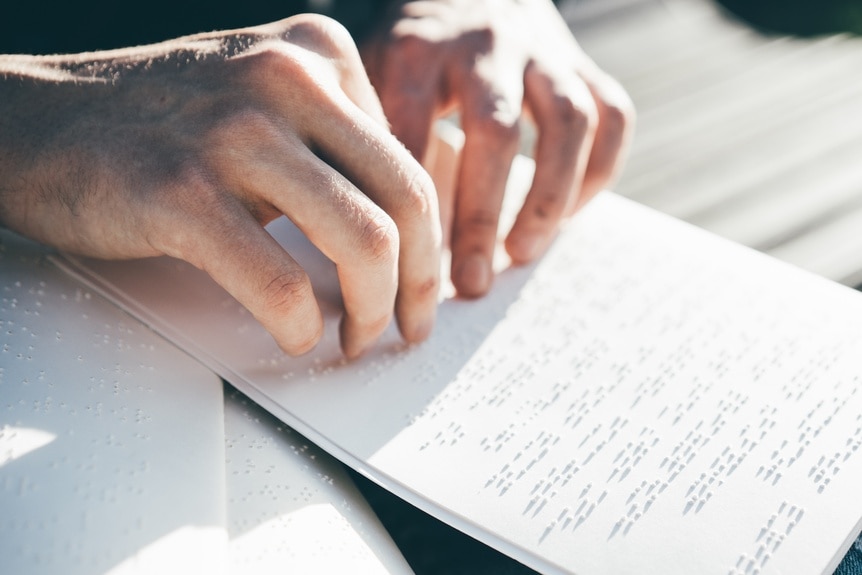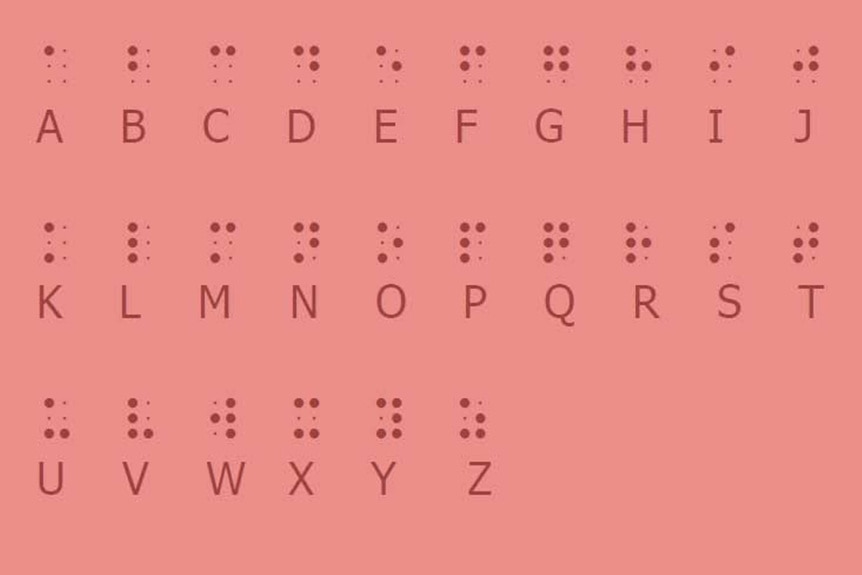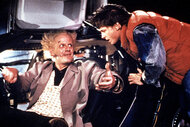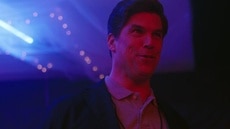Create a free profile to get unlimited access to exclusive videos, sweepstakes, and more!
An Introduction to Braille: The Science Behind The Book of Eli
More than a movie MacGuffin, Braille is an innovative form of tactile communication.
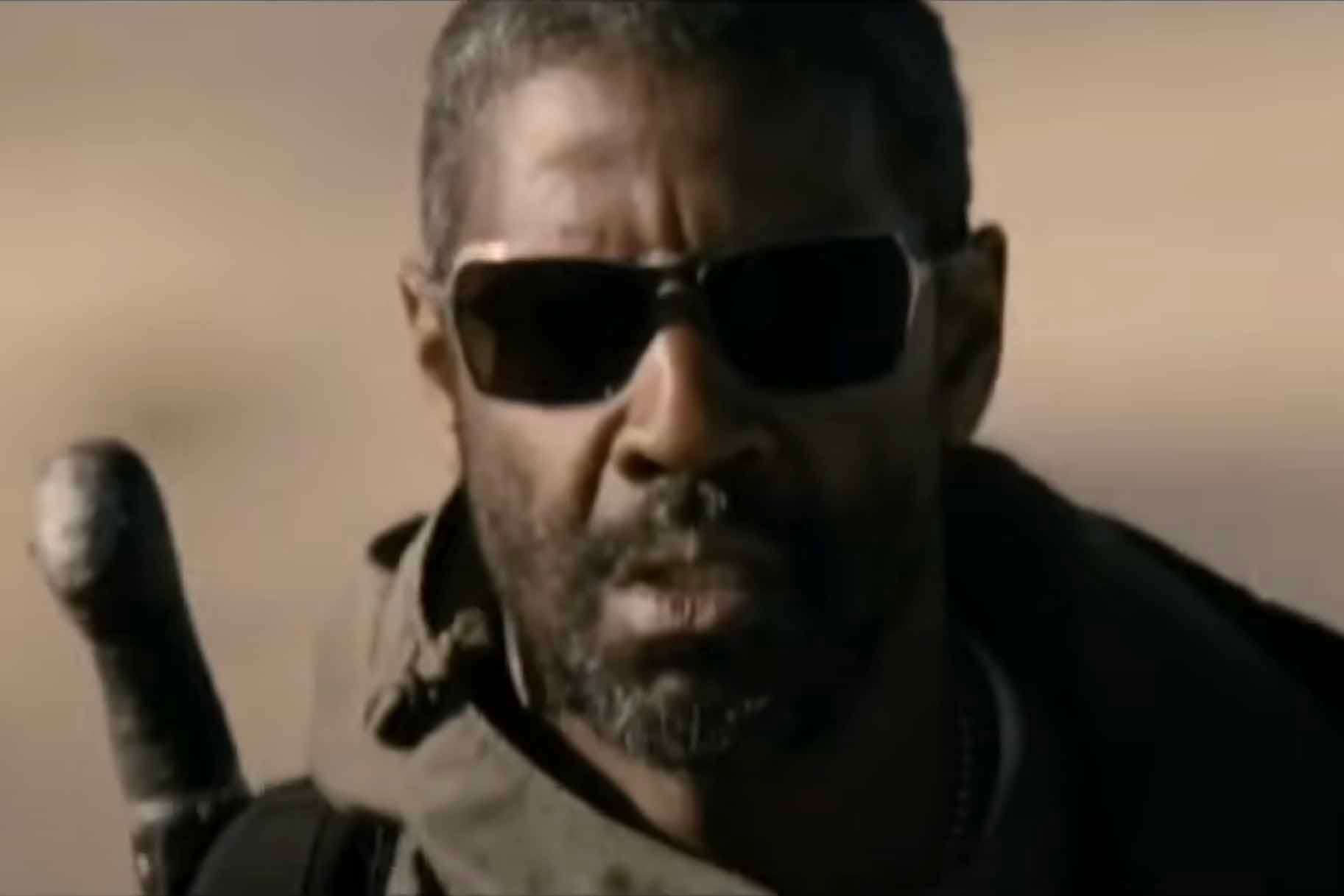
The 2010 post-apocalyptic adventure film The Book of Eli (now streaming on Peacock), written by Gary Whitta and directed by the Hughes Brothers, is a story about the value of cooperation and differing points of view, especially when the chips are down. It’s been decades since a global nuclear disaster and ensuing environmental collapse. Eli (Denzel Washington) moves across a desolate landscape filled with the desperate remains of humanity.
He’s transporting a copy of the Christian Bible to the West Coast where a group of people are working to preserve what’s left of humanity’s art, literature, and culture. Along the way, Eli is threatened by powerful and malicious forces bent on getting the book for its ability to control people’s thoughts and actions. They succeed and the book is lost, but Eli was hiding a secret: The book was written in braille, a tactile reading system that’s unintelligible to most of the survivors.
The History and Invention of Braille
In the real world, braille is used by millions of blind or visually impaired people around the globe to read and write. It’s a relatively new addition to humanity’s collection of writing systems and an evolution of prior embossed writing systems.
In the beginning, printers raised ordinary written letters, and visually impaired readers were expected to feel them out. The idea being that the symbols for visually written letters would translate to a tactile medium, but that didn’t work very well. In 1815, Charles Barbier published his alphabet for Night Writing, intended for use by soldiers communicating in the dark. Instead of using conventional letters, it relied on collections of 12 raised dots arranged in a grid two dots wide and six dots tall. Each cell represented an individual phoneme, but the cells were too large to be interpreted by a single finger with a single pass. That’s where Louis Braille comes in.
Louis Braille was born in Coupvray, France, in January of 1809. His father was a leather worker and one day when Braille was 3, he injured an eye with the sharp end of his father’s stitching awl. An ensuing infection caused blindness in both eyes. Braille attended school where he excelled and earned a scholarship to the National Institute for Blind Children, in Paris. There, he learned Barbier’s Night Writing system and got to work improving upon it.
How Reading and Writing Braille Works
Braille cut the cell size in half, reducing the number of dots from 12 to six, and simplified the alphabet. Over the years, the system evolved and today it includes 63 characters, each made of between one and six raised dots. When embossed on paper or other materials, they can be read by passing the fingers over them. Braille’s schoolmates readily picked up on his improved reading and writing system and braille spread from there. In fact, the six-dot cell matrix structure of braille makes it useful for communicating all kinds of things. People all over the world use it to communicate mathematics and scientific notation, musical notation, and a variety of languages.
In its simplest form, braille can be used to write out words and sentences by directly translating letter by letter using the 26 symbols which correlate to the English alphabet. In practice, things are a little more complicated. There are also symbols for common words like “and,” “for,” “of,” “the,” etc, and common letter combinations like “ch,” “sh,” “th,” “er,” and more. You’ll also find symbols for punctuation, for making contractions, capitalizing words, and otherwise modifying what’s being communicated. While it’s possible to learn the braille alphabet in an afternoon, becoming fluent is a longer process requiring you to learn the unique way Braille plays with language in a tactile medium.
Reading braille is usually a two-handed activity. One hand trails along the line you’re currently reading while the other hand finds the beginning of the next line. By moving your hands apart and back together in sequence you can maintain a smooth transition from line to line. Writing braille involves the use of a layered slate which holds a sheet of paper against a surface marked with small pits. The writer uses a stylus to press the paper into the pits, creating raised bumps on the other side. Because you’re essentially writing on the back of the page, the writer has to write from right to left, then the page is flipped over and can be read from left to right. There are also machines similar to typewriters which can emboss paper a little more easily.
Before you can read or write braille, it might help to understand how the system works. The six potential dots inside each cell are labeled with a number. The left column from top to bottom is 1, 2, and 3, while the right column contains 4, 5, and 6. The first 10 letters of the English alphabet (A - J) are made using only the top two rows (dots 1, 2, 4, and 5). The next 10 letters (K - T) are made by adding dot 3 (bottom left) to each of the first 10 letters. Letters U, V, X, Y, and Z are made by adding both bottom dots (3 and 6) to the first five letters. The French alphabet didn’t have a W when braille was invented and was added later. It doesn’t follow the rules and is made by adding just dot 6 to the letter J.
That will get you started and is usually enough to get at least some meaning out of braille texts, but just like when you learned the alphabet in grade school, that’s only the tip of the communication iceberg. Braille offers a way for visually impaired folks to enjoy information and entertainment they might otherwise not have access to.
And if the whole world goes sideways, it might be the key to preserving a part of our past. Watch Book of Eli streaming now on Peacock!
